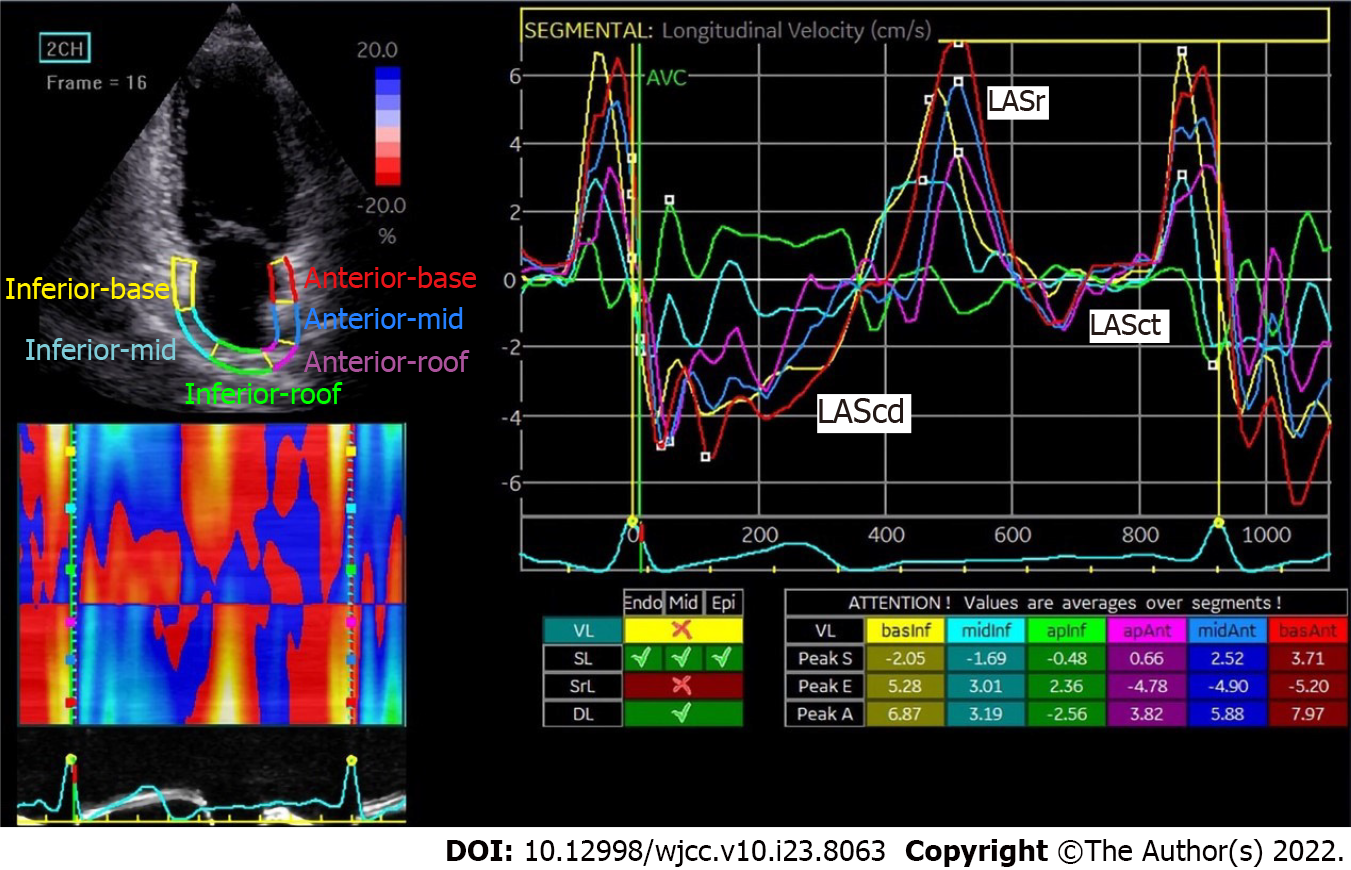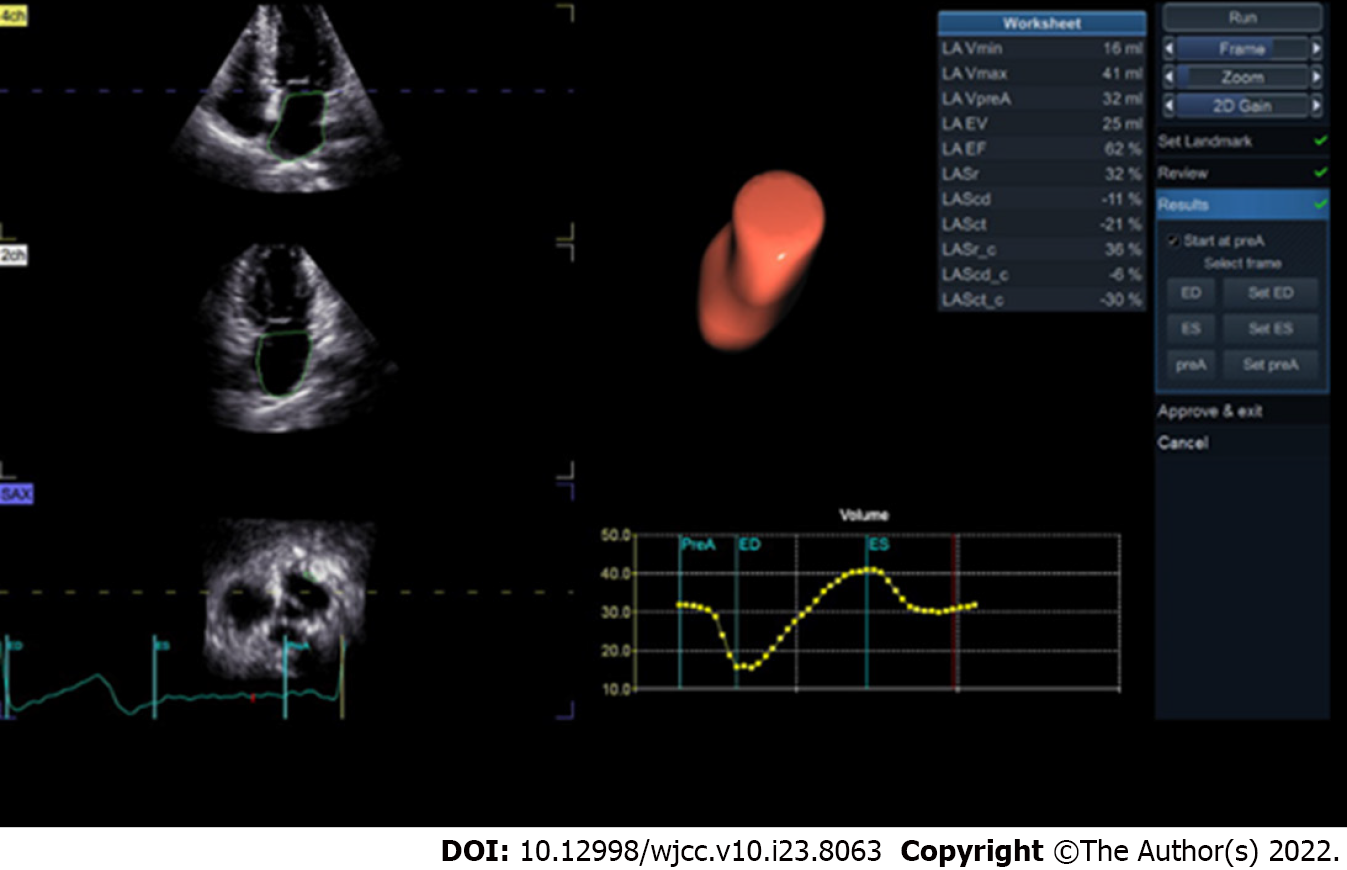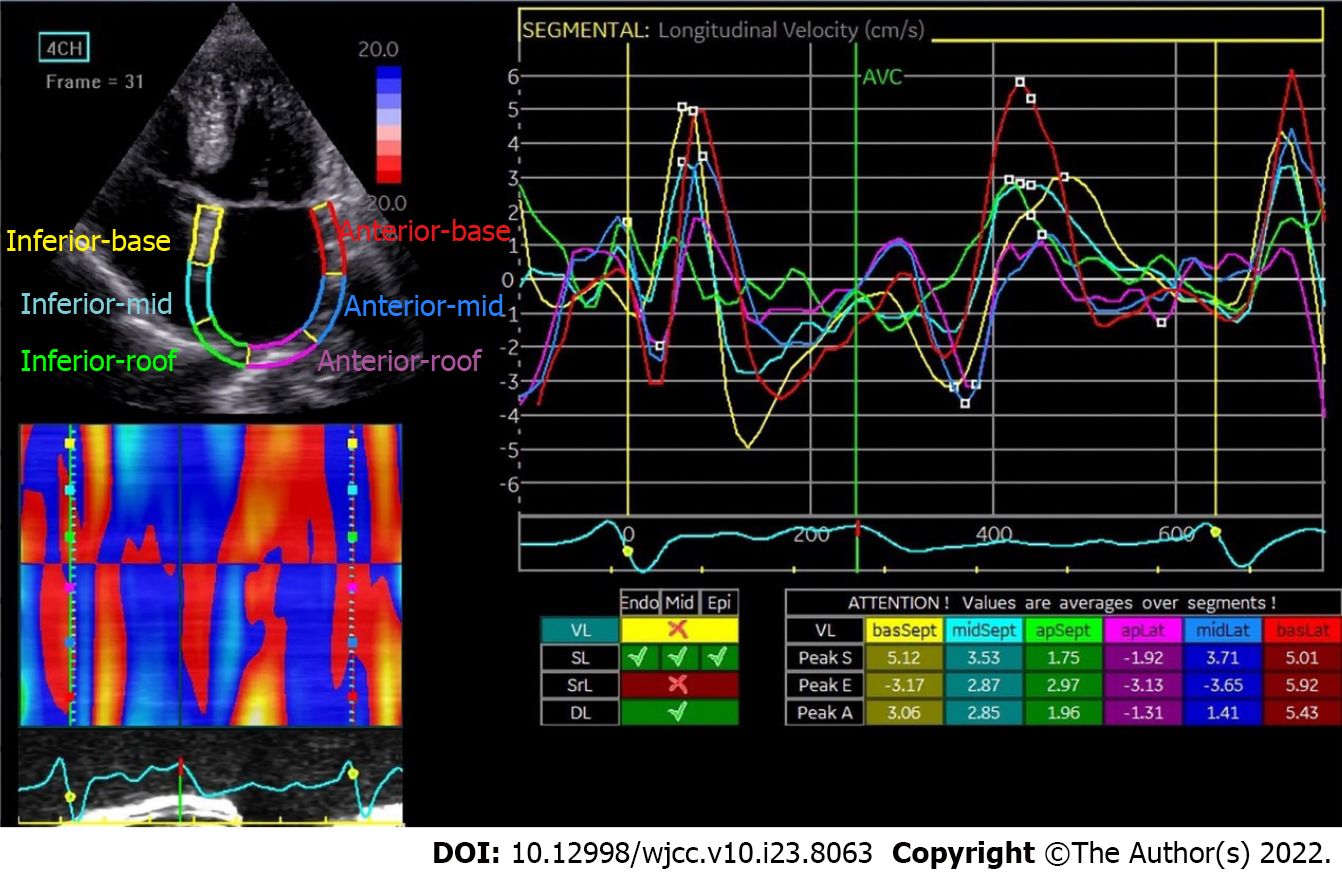Copyright
©The Author(s) 2022.
World J Clin Cases. Aug 16, 2022; 10(23): 8063-8075
Published online Aug 16, 2022. doi: 10.12998/wjcc.v10.i23.8063
Published online Aug 16, 2022. doi: 10.12998/wjcc.v10.i23.8063
Figure 1 Atrial strain image by 2D-speckle tracking echocardiography in a healthy volunteer.
As shown on the left, the left atrium is divided into six segments distinguished by color and corresponding to the strain curve in the same color from the apical four-chamber view. Each segment of LA diastole and contraction successively and regularly over time with a similar trend are shown on the right. The positive peaks in the sinus rhythm strain curve reflect the reserve function of the left atrium, marked as LASr (white label). While the first and second negative peaks stand for the conduit phase (marked as LAScd in the white label) and contractile phase (marked as LASct in the white label) respectively. LASr: Left atrial reservoir strain; LASct: Left atrial contractile strain; LAScd: Left atrial conduit strain.
Figure 2 Atrial strain image by 3D-speckle tracking echocardiography in a healthy volunteer.
3D-speckle tracking echocardiography reconstructs the 3D structure of left atrium without the left atrial appendage, through continuous monitoring of four cardiac cycles, plots the time-volume curve of the left atrium avoiding the error caused by geometric hypothesis calculation, and calculates the parameters as the list in the upper right corner. It is difficult to meet the continuous and stable cardiac cycle in atrial fibrillation patients.
Figure 3 Atrial strain image by 2D-speckle tracking echocardiography in a patient with atrial fibrillation.
Similarly, as shown on the left, left atrium is divided into six segments distinguished by color and corresponds to the strain curve in the same color from the apical four-chamber view. Each segment of left atrial diastole and contraction successively over time is shown on the right. The strain curves in patients with atrial fibrillation (AF) are more disorganized than those in healthy volunteers (Figure 1). The different stages of atrial function cannot be clearly distinguished over the cardiac cycle in AF patients.
- Citation: Yu ZX, Yang W, Yin WS, Peng KX, Pan YL, Chen WW, Du BB, He YQ, Yang P. Clinical utility of left atrial strain in predicting atrial fibrillation recurrence after catheter ablation: An up-to-date review. World J Clin Cases 2022; 10(23): 8063-8075
- URL: https://www.wjgnet.com/2307-8960/full/v10/i23/8063.htm
- DOI: https://dx.doi.org/10.12998/wjcc.v10.i23.8063











